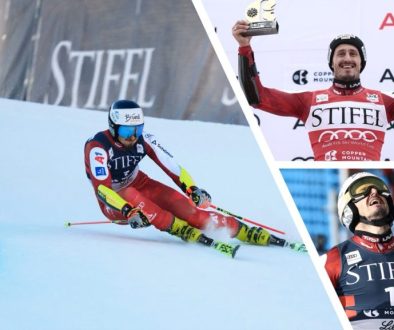Which camps are the best?
We have a lot of camps, and if you’re thinking about your first camp or few, it can be hard to know which ones are best for your child. It is a big investment, after all!
Why it matters
- Attending alpine camps comes at a significant cost, so it’s important to make the right choices.
- Training volume is about more than just time on snow – it’s about the right type of training, at the right time, for the right athlete.
- Too little training can slow skill progression; too much can lead to fatigue, injury, or burnout.
- We follow a “quality over quantity” approach – prioritising focused, varied sessions and sustainable progress.
Find out more about why getting training volume right is so important in our previous article.
How many camps should an athlete attend?
The key principle is to get the volume right. Beyond that, it doesn’t hugely matter exactly which camps you attend, so long as it is an appropriate amount of training and racing. For most racers, unless they are a U10, a single one-week camp each season is not going to be enough for them to really develop. Two to three camps is where most racers will thrive, and then it comes down to affordability, both in terms of cost, and in any time taken off of school. In short: do what you can, when you can!
🟢 U10–U12 (FUNdamentals / early Learn to Train)
Recommended: 1–2 camps/year
✅ Best options: camps with a mix of training and free-skiing opportunities, with some races.
- New Year: no/minimal time off school required, exploring lots of different ski areas, with dedicated free ski afternoons
- February half-term: again, minimal time off school required, with potential race opportunities, typically good weather, and plenty of time outside the gates
🔁 Keep variety with plenty of Scottish skiing in a good winter, and lots of other sports
❌ Avoid indoor camps, as there is little free-skiing, and the icy surface can be brutal!
🔵 U12–U14 (Late Learn to Train / early Train to Train)
Recommended: 2–3 camps/year
✅ Best options: camps with lots of training time, and more race opportunities
- October: ideal for developing technique & confidence – lots of time & miles on skis
- Indoor Camps: solid, intense technical + tactical training blocks
- New Year: first seeded race exposure but still plenty of free-skiing & fun to be had
- February/Easter: lots of training time and a god stepping stone toward full competition
🔁 Complement with lots of Scottish skiing and general sports activity
💰 Bursary support often available at this level
🔴 U14–U16 (Train to Train)
Recommended: 3–4 camps/year
✅ Best options: camps with more focussed training time, and seeded BASS races
- October: key performance development
- Indoor Camps: short, intense bursts to keep the skiing fresh between other camps
- New Year: lots of miles on skis & early-season race opportunities
- February: solid training block followed by several British races to stack up against a national level
- Summer Camps: now there’s more of a focus on snow ski training in the off-season
📈 Volume starts to build here—still with balance and fun
🧠 Include off-snow fitness and sport psychology development
⚫ U16+ (Train to Compete)
Recommended: 4+ camps/year + focussed off-snow ski training
✅ Best options: all camps are relevant – maximise volume depending on race calendar, school exams, costs, etc.
💭 Emphasis on tactical refinement, competition strategy, self-management
🏋️♀️ S&C, equipment testing & tweaking, lots of video analysis, and sport phsychology all become essential

